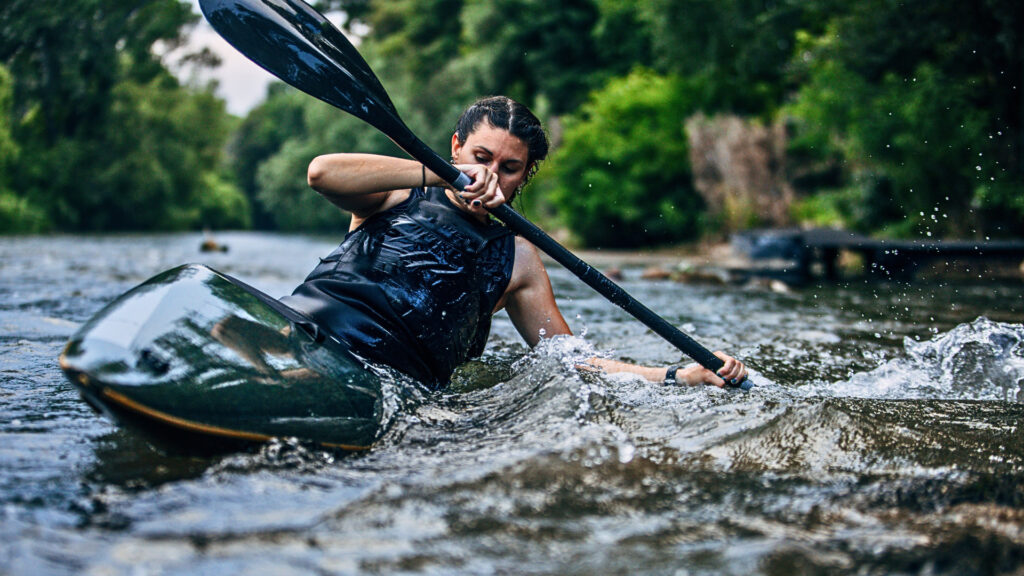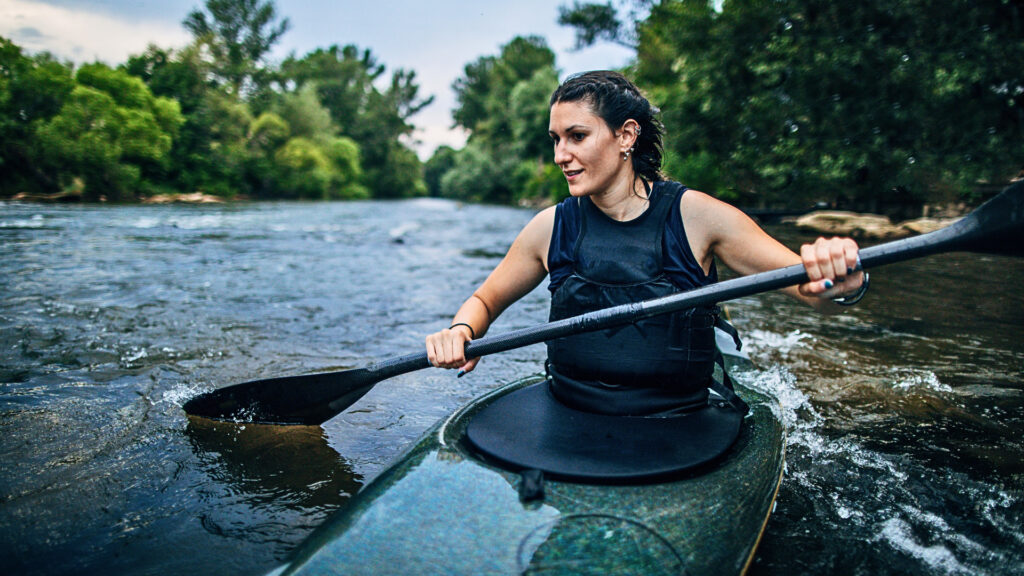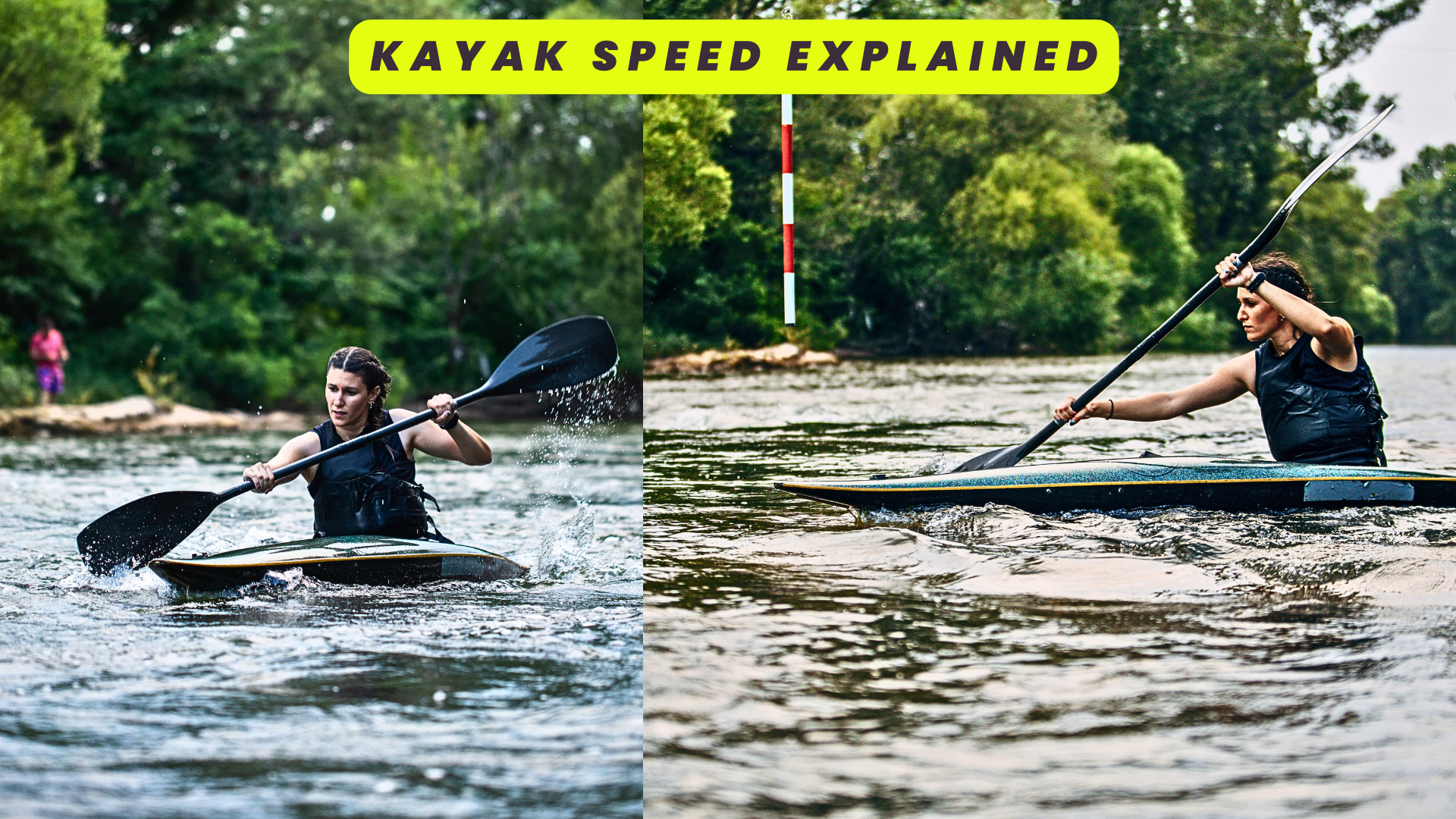Kayak Speed Explained | How To Paddle Faster On The Water
Kayaking is not only a pleasant hobby, but it also improves your physical and mental fitness. However, if you want to take your kayaking experience to the next level, you must increase your kayak speed.
We’ll go over all you need to know about kayak speed and how to accomplish it in this article. We’ve got you covered on everything from the definition of kayak speed to the elements that influence it, as well as the skills and training required to enhance it.
Understanding Kayak Speed

The Definition of Kayak Speed
Kayak speed refers to how quickly a kayak moves across the water. It is expressed in miles per hour (mph) or kilometers per hour (km/h) (kph). The weight and shape of the kayak, as well as the paddler’s strength and technique, all have an impact on kayak speed.
The Importance of Kayak Speed
Kayak speed is critical for several reasons. For starters, it lets you travel further in less time, making it excellent for racing or touring. Second, it allows you to keep up with your paddling companions, which makes group kayaking outings more fun. Finally, increasing your kayak speed is an excellent method to push yourself and enhance your kayaking abilities.
Factors Affecting Kayak Speed

The Weight of the Kayak
The weight of your kayak has a considerable impact on its speed. In general, a lighter kayak is faster than a heavier one. This is because a lighter kayak uses less energy to move across the water.
The Kayak’s Design
The kayak’s design also has an impact on its speed. Kayaks with longer and narrower hulls are faster than those with shorter and wider hulls. Because longer and slimmer kayaks have less drag in the water, they may move quicker.
Strength and Technique of the Paddler
Kayak speed is determined by the paddler’s strength and technique. A paddler with high upper body strength and appropriate technique can paddle faster than someone who does not have these attributes. Maintaining a continuous paddle rhythm, effective body placement, and altering your paddle angle are all examples of proper technique.
Kayak Speed Increasing Methods Correct Paddling Technique
To increase kayak speed, proper paddling technique is required. Planting the paddle blade fully in the water, bringing it straight back towards your hip, and lifting the paddle out of the water is the most effective paddle stroke. Twisting your torso or sinking your blade too deeply will result in extra drag.
Paddle Rhythm That Remains Constant
Keeping a constant paddling rhythm is also essential for accelerating your kayak. Strive to create and maintain a steady stroke rate throughout your paddle. This helps to create momentum and saves energy on inefficient movements.
Body Posture That Works
Another important part of proper paddling technique is efficient body placement. Sit up straight and place your feet firmly on the footrests. This allows you to use your core muscles to power your strokes while remaining balanced.
Paddle Angle Adjustment
The paddle angle can also be adjusted to aid boost kayak speed. A tiny forward inclination of the paddle blade increases surface area and creates more excellent lift, while a slight backward tilt reduces drag.
Strengthening Kayak Speed Training
Strength training is necessary for increasing kayak speed. Exercises that target your upper body and core muscles, such as push-ups, pull-ups, and planks, should be prioritized. These exercises will assist you in developing the strength required to paddle faster.
Cardiovascular Exercise
Cardiovascular exercise is also beneficial for increasing kayak speed. Running, cycling, and swimming can help you build endurance and paddle faster for longer periods.
Interval Exercise
Interval training consists of periods of high-intensity activity followed by periods of rest or lower-intensity exercise. This sort of exercise is beneficial for increasing strength as well as cardiovascular fitness. Intervals can be added to your paddling sessions by sprinting for a specified period, then relaxing before repeating the sprint.
Improper Paddle Technique Is a Frequent Error That Affects Kayak Speed
The paddling technique can dramatically reduce kayak speed. Consider attending a paddling lesson or hiring a coach to assist you improve your technique if you’re unsure. The correct technique can make or break how quickly and efficiently you travel through the water.
Kayak Overloading
Overloading your kayak can also slow it down. Check that you aren’t carrying too much stuff or weight in your kayak, as this can cause drag and slow you down.
Inadequate Training
Another thing that can reduce your kayak speed is a lack of training. Maintain consistent strength and cardiovascular fitness training, as well as paddling technique practice. Consistency is essential for faster kayak speeds.
FAQ’s
What Factors Influence Kayak Speed?
The weight of the kayak, its design, and the paddler’s strength and technique all contribute to the speed of a kayak. In general, a lighter kayak is faster than a heavier one, while longer and narrower kayaks are quicker than shorter and larger ones. Good techniques, such as maintaining a continuous paddling cadence, efficient body placement, and altering your paddle angle, can also have a big impact on kayak speed.
What are the average kayak speeds?
Kayak speeds vary based on the paddler’s skill level and the water conditions. A good kayak speed for beginners is between 2-4 mph. Speeds of 5-7 mph are usual for more experienced paddlers, with top competitors reaching speeds of up to 12 mph.
How long does it take to kayak one kilometer?
The time it takes to kayak 1 km is determined by various factors, including the paddler’s skill level and the water conditions. An expert paddler can kayak 1 km in around 15-20 minutes, whereas a beginner may take closer to 30 minutes.
What is the fastest kayak type?
The racing kayak, designed for speed and performance, is the fastest type of kayak. These kayaks are usually longer and slimmer than recreational kayaks, with a streamlined form and a rudder for steering. Race kayaks may attain speeds of up to 12 miles per hour, making them ideal for competitive kayakers.
Conclusion
Kayak Speed Tips Recap
Final Thoughts on Kayak Speed
Improving your kayak speed requires time and effort, but the results are well worth it. You may steadily enhance your kayak speed and take your kayaking experience to the next level by focusing on excellent technique, strength and cardiovascular training, and persistent practice. So grab a paddle, get out on the water, and paddle your way to quicker speeds and bigger accomplishments.

